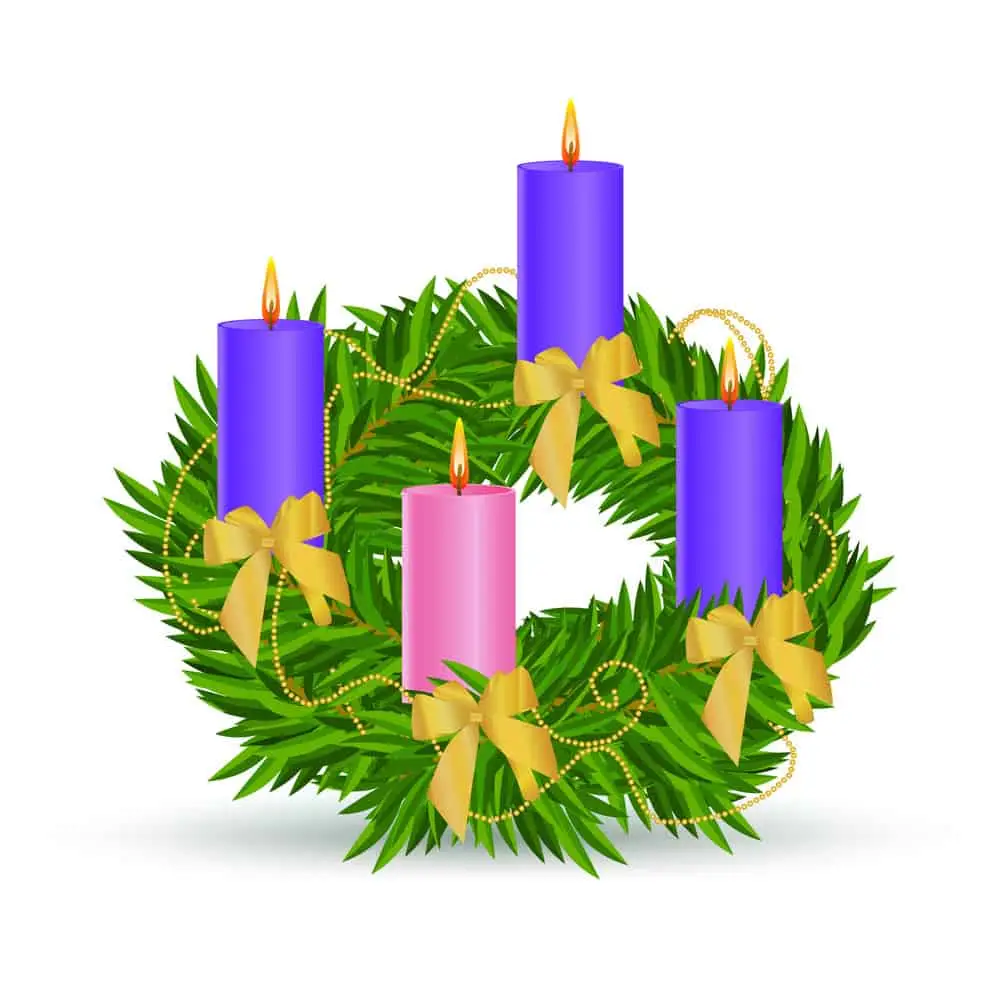Advent (from the Latin adventus, which means “coming”) is the period of preparation for celebrating Christmas, the birth of Our Lord Jesus, who came to bring us eternal life. Since the 900s, the First Sunday of Advent has been the beginning of the Church’s liturgical year. It is a season of joyful, prayerful, and penitential preparation for the three comings of Christ: His coming in the flesh, His coming in every moment of our lives, and His coming at the end of time.
The Advent season begins on the First Sunday of Advent (the Sunday nearest November 30, the feast of St. Andrew the Apostle) and ends on Christmas Eve, December 24. There are four Sundays of Advent.
A popular custom at this time of year is the Advent wreath, a wreath with three violet candles and one rose candle. One violet candle is lit on the First Sunday, two on the Second Sunday, two violet candles and the rose candle on the Third Sunday (also called Gaudete Sunday), and all four candles on the Fourth Sunday.
In an article on Catholic Exchange, Br. John Chrysostom Kozlowski, O.P. explains how we can fruitfully live Advent: “The late Pope John Paul II shows the way: Advent is a period of intense training that directs us decisively to the One who has already come, who will come, and who continuously comes.

“For the first part of Advent, the emphasis is on the Second Coming of the Lord. The first Advent preface, used during the first part of Advent, recalls our Lord’s first coming at His birth over two millennia ago, but more heavily stresses His Second Coming. We are told that the Son of God “humbled Himself to come among us as a man” (Advent Preface I). But as quickly as we remember the Christ who has already come, this first preface points to the Christ who will come again. For “we watch for the day, hoping that the salvation promised us will be ours when Christ our Lord will come again in His glory” (Advent Preface I). By recalling the first coming of Christ, the coming that we will joyfully celebrate at Christmas, we gain confidence that Christ has not abandoned us but will come again.
“From the earliest days, followers of Christ, like St. Paul, have watched for the Lord’s Second Coming (see 1 Thess. 1:10). We know that the Lord did not come in glory during the lifetime of St. Paul. Were St. Paul’s preparations in vain? Advent’s first preface says that we are to watch for the day of Christ’s coming in glory. Will our preparations for the Second Coming be in vain? Our efforts would not be in vain if we realize that in order ‘to prepare our hearts to welcome the Lord…we must learn to recognize His presence in the events of daily life’ (John Paul II). The first part of Advent calls us to watch for the coming of our Lord at every moment of our lives. It is by recognizing Him who continuously comes in every aspect of our lives that we are drawn into deeper communion with our Lord who will come in glory.”
The short Advent prayer below has traditionally been prayed 15 times a day beginning on November 30 (feast of St. Andrew the Apostle) and continuing until Christmas. Say it once a day or as many times as you like, starting whenever you discover this inspiring prayer!
Hail and blessed be the hour and moment in which the Son of God was born of the most pure Virgin Mary, at midnight, in Bethlehem, in the piercing cold. In that hour vouchsafe, I beseech Thee, O my God, to hear my prayer and grant my desires (here mention your request), through the merits of Our Savior Jesus Christ and of His blessed Mother. Amen.